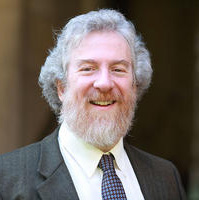Serve God With Joy

I recall reading The Adventures of Tom Sawyer while in elementary school, and being stumped by a description of the powerful singing in church of “Old Hundred.” What might this “Old Hundred” be, and why was it being sung in church with such fervor? Eventually, I found out that this was Psalm 100, and was sung by the community as it learned that Tom Sawyer was alive, and had mischievously staged his own disappearance.
Within this short psalm is a simple and powerful command: “Ivdu et Adonai b’simchah!” (Serve God with joy!), and it is the attempt to fulfill the teaching that has inspired visionaries over the generations to seek renewal and fervor within the structures of Jewish worship. We have looked in previous essays at the way in which Jewish worship is seen as avodah (service), just as the priestly rituals of the Temple are cast as ha’avodah shebalev (service of the heart, for which this series of essays is named). Our verse from Psalm 100 makes a demand beyond even the concept of kavanah (intention)—it demands that we find joy in our worship.
There are certainly many among the Jewish People who see the prayers as rote duty, in which we express the thanks and praise that are due to God. But it is difficult to find joy in carrying out a rote duty. Hasidic masters from the Baal Shem Tov (the founder of Hasidism) onward have turned to this teaching over and over as the basis for introducing ecstatic song, and even dancing, into an otherwise serious order of worship.
The teaching is no less applicable in our own times, and many of the innovations in modern Jewish worship can be understood in its light. For some, there is true joy in new words—new poetry that explores and deepens the themes of worship. The new prayer books of the Reform and Conservative movements (Mishkan T’filah, Siddur Sim Shalom, and Mahzor Lev Shalem) are wonderful exemplars of attempts to find poetry that stirs the heart and mind alike. A wonderful mix of new and old sounds, classic hazzanut juxtaposed with Israeli compositions, and traditional nusah and nigunim of diverse Hasidic courts have come to adorn modern Jewish worship. Sometimes with instrumentation and sometimes a cappella, there is an array of joyful sounds of praise to be heard in our synagogues. This, in so many places, is the true sound of “Old Hundred,” the sound of serving God with joy.
As always, I am interested to hear comments and reflections on these thoughts about prayer and liturgy. You may reach me at sabarth@jtsa.edu.



